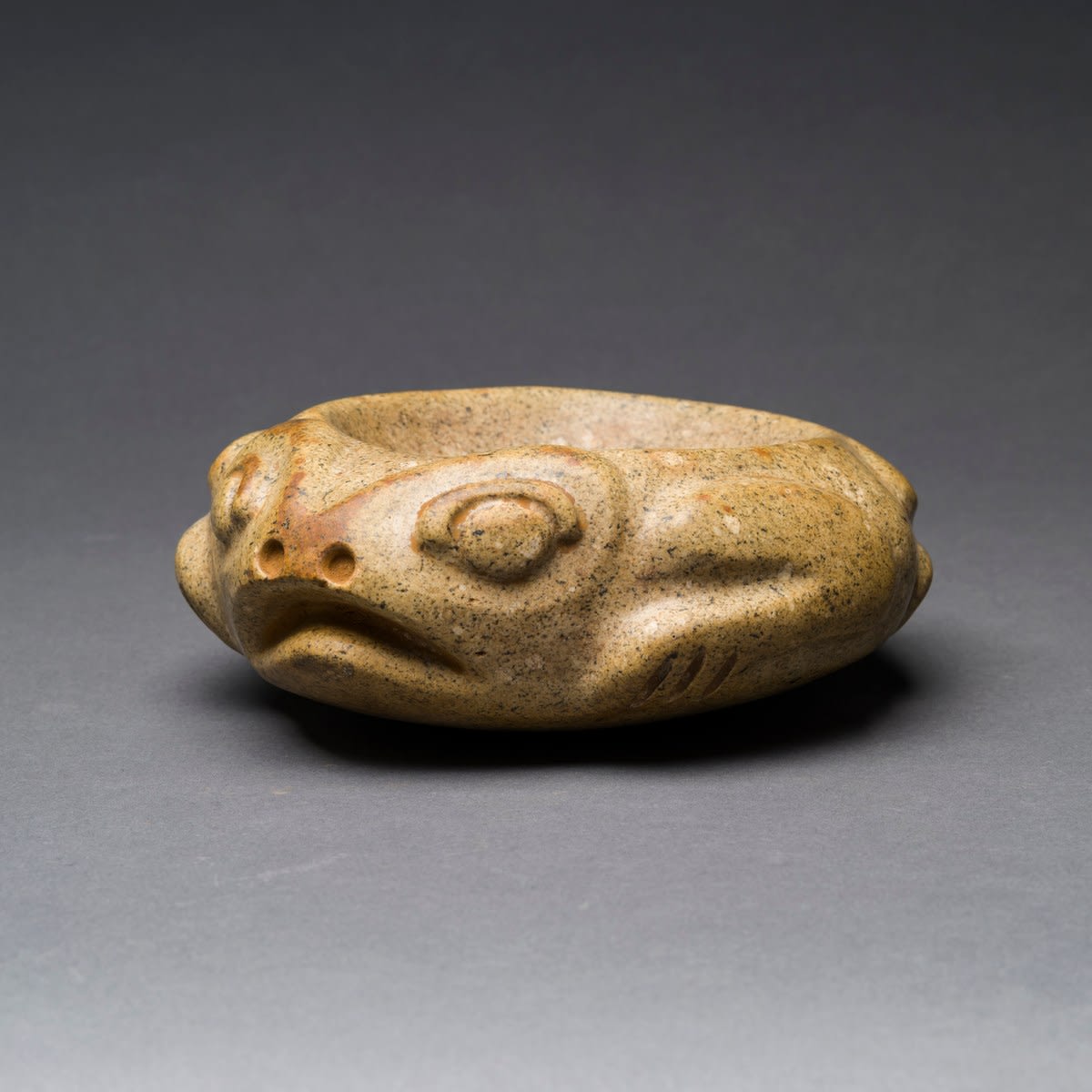Costa Rican stone mortar in the form of a frog
14 x 6.3 x 15.2 cm
5 1/2 x 2 1/2 x 6 in
5 1/2 x 2 1/2 x 6 in
CK.0833
Further images
A metate or metlatl is a type of quern, a ground stone tool used for processing grain and seeds. In traditional Mesoamerican culture, metates were typically used to grind lime-treated...
A metate or metlatl is a type of quern, a ground stone tool used for processing grain and seeds. In traditional Mesoamerican culture, metates were typically used to grind lime-treated maize and other organic materials during food preparation. Carved stone ceremonial metates represent one of the most unusual and complex traditions of pre-Columbian artifacts from Costa Rica. They come in many different forms, and their morphological variations correspond to different regions and time periods. They can be rectangular, circular, flat, or curved, with or without rims and between three and four legs. Some exhibit signs of use-wear while others show no signs of wear and appear to have been made specifically for use as burial goods.
Metates discovered without their grinding stones suggest that the carved metate as a mortuary object had a deeper symbolic meaning than just the processing of food. The metate’s basic mechanical purpose is a platform on which (primarily) maize is ground into flour. This transformation of grain to flour has symbolic implications relating to life, death and rebirth. Given their role as a burial good, it seems that metate held a strong meaning for human life, death and the hope for a rebirth or transformation of some kind. Some examples are known as effigy-headed metate, which feature an animal’s head at one end, with the metate itself making up the body of the creature. Animals typically depicted are jaguar, crocodile or birds. The three most popular iconographic elements of ceremonial metate seem to be saurian, bird, and jaguar creatures. Monkeys are also common. A unique feature of ceremonial metate is the lack of human figures, with disembodied heads being the sole exception.
Metates discovered without their grinding stones suggest that the carved metate as a mortuary object had a deeper symbolic meaning than just the processing of food. The metate’s basic mechanical purpose is a platform on which (primarily) maize is ground into flour. This transformation of grain to flour has symbolic implications relating to life, death and rebirth. Given their role as a burial good, it seems that metate held a strong meaning for human life, death and the hope for a rebirth or transformation of some kind. Some examples are known as effigy-headed metate, which feature an animal’s head at one end, with the metate itself making up the body of the creature. Animals typically depicted are jaguar, crocodile or birds. The three most popular iconographic elements of ceremonial metate seem to be saurian, bird, and jaguar creatures. Monkeys are also common. A unique feature of ceremonial metate is the lack of human figures, with disembodied heads being the sole exception.







